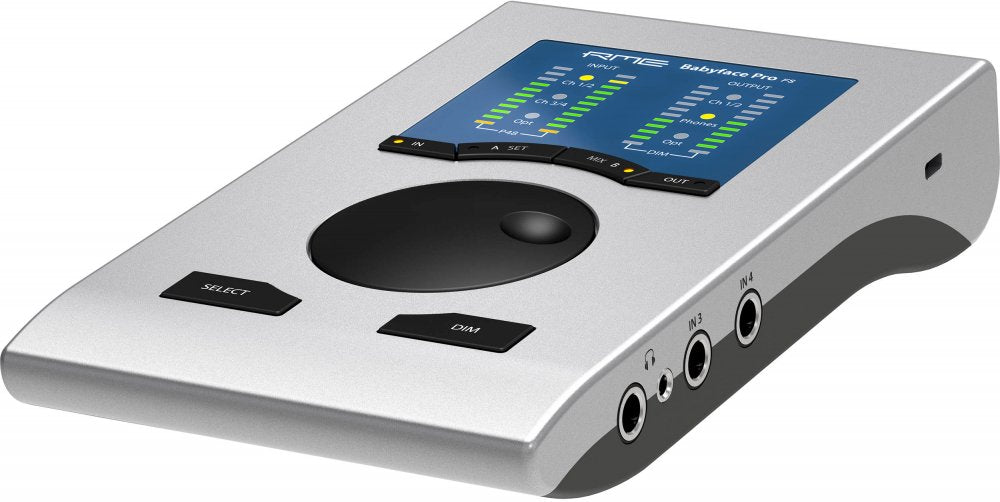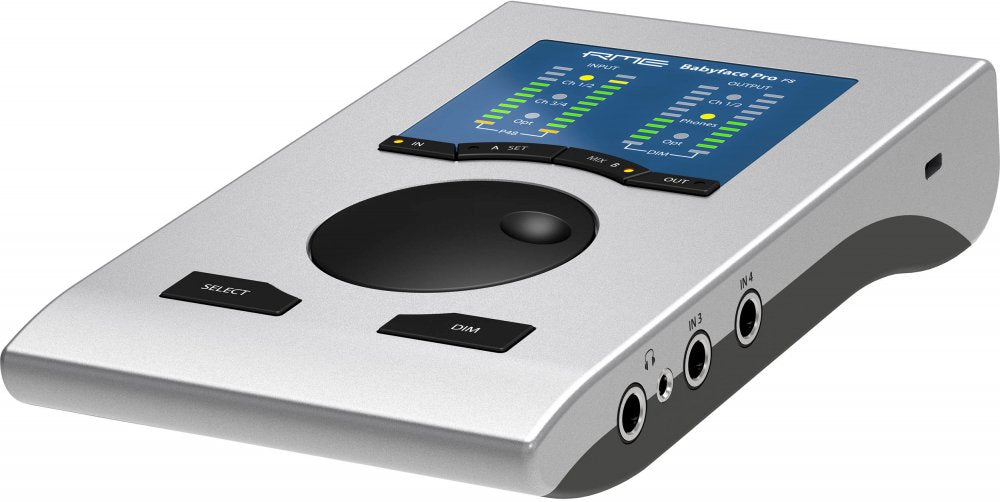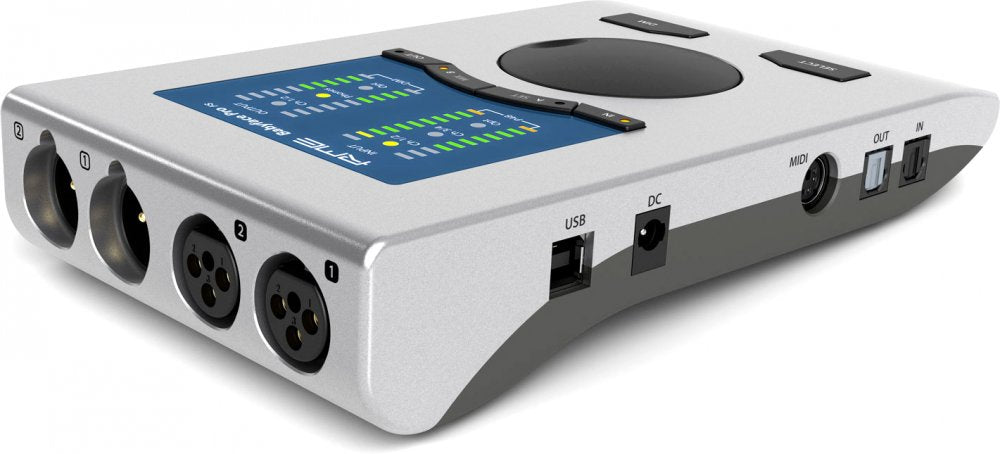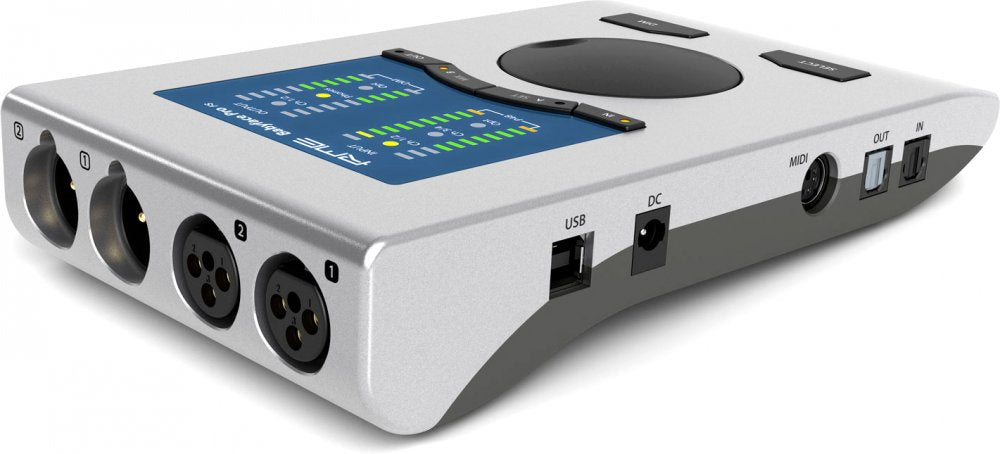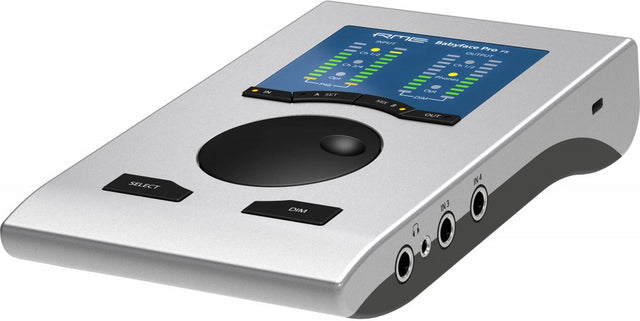BabyFace Pro FS
Delivery & Shipping
Delivery & Shipping
Free Shipping in Canada with orders over $200. Conditions apply. View details here.
Financing
Financing
Affirm
Break your purchase into easy monthly payments, quick approval and no hidden fees.
Click here for more info.
Equilease
Ideal for larger purchases, Equilease offers customized leasing solutions to fit your business needs.
Click here for more info.
Returns & Policy
Returns & Policy
You can review our terms and conditions here
Description
Description
ADI-2 Series Headphone Power The two headphone outputs, offering TRS and mini-jack sockets in parallel, have completely separate driver stages to perfectly match low and high impedance headphones, guaranteeing pristine sonic results no matter what type of headphone is used.
The 3.5 mm TRS phones output power rises to 90 mW. THD of both phones outputs improved by up to 10 dB. and uses same output op-amps as ADI-2 Pro now. Finally the output impedance of 3.5 mm TRS was lowered from 2 Ohms to 0.1 Ohms.
Full range capture - Improved Mic & Line Inputs For the main I/O RME have designed a XLR socket, which integrates seamlessly into the housing and saves space.
Two digitally controlled preamps provide individually switchable 48V phantom power. These circuits feature a gain range of 76 dB, adjustable in steps of 1 dB, including a relay-driven PAD, resulting in exceptional EIN (Equivalent Input Noise) performance as well as line overload protection, and enough gain for even the lowest level microphones.
Babyface Pro's incredibly efficient design almost never requires an external power supply - it's perfectly stable on USB 3 bus power, and also most USB 2 ports, with no degradation in any technical specification. This makes it perfect for mobile recording, even with a pair of your favourite condenser microphones.
The comprehensive feature set continues with an optical TOSLINK I/O; use as either an ADAT port with SMUX support or SPDIF for sessions up to 192 kHz. In combination with an external ADAT converter, the Babyface Pro fully supports 12 analog inputs as well as 12 outputs, making it ideal for both live and studio multi-track applications. You can plug any instrument, line or high impedance, into Babyface Pro's jack inputs 3 & 4. Record your guitar on the go, with no additional hardware required. MIDI I/O via an included breakout cable completes the package.
More Pro level Performance with SteadyClock FS In digital audio, the clock frequency is an essential factor, as it creates the correlation between the audio bits and the time reference. Unfortunately, the clock frequency is not always as stable as desired. The Babyface Pro FS offers the full SteadyClock FS circuit as in the ADI-2 Pro FS for lowest jitter and highest jitter immunity. Excellent performance in all clock modes and High Quality Analog Conversion to hear your mix as it is. Digital format conversion in RME products are done without any loss or degredation,and SteadyClock FS ensures your sonic image will never experience degredation. This helps to optimize recordings and mixes because the soundstage has more depth and clarity.
Mixing & Routing with TotalMix FX & TotalMix Remote Like all the latest RME interfaces, the Babyface Pro FS also includes the powerful digital real-time mixer TotalMix FX. It allows fully independent routing and mixing of input and playback channels to all physical outputs. Independent stereo submixes plus a comprehensive Control Room section offer unrivalled monitoring capabilities and unsurpassed routing flexibility.
Babyface Pro FS ships with RME's TotalMix FX, available for Windows and Mac OS X. An iOS version is available as well. This amazingly versatile software allows you to use Babyface Pro in any situation. For example mixing your guitar and vocals to headphones has never been easier. The FPGA-based DSP mixer adds a flexible, 3-band parametric equalizer to all inputs and outputs. Reverb and delay FX are also available.
Additionally RME's latest software, TotalMix Remote, enhances the power of the Babyface Pro FS by enabling remote control via iOS, PC or Mac. With a straightforward set up process - simply enter the IP address of the computer you would like to control with TotalMix Remote and get going - users can quickly adjust any aspect of TotalMix FX on a host system while walking around the studio with their tablet, or from a control room located elsewhere in the facility.
The FPGA-based DSP mixer adds a flexible, 3-band parametric equalizer to all inputs and outputs. Reverb and delay FX are also available. Latest generation low latency AD/DA converters, combined with RME's unique SteadyClock FS technology, result in exceptional specifications that will satisfy the most demanding of professionals. Combining a huge feature set with sonic excellence and intuitive control, whether for the studio or on the move, the RME Babyface Pro is the most comprehensive and versatile compact audio interface ever built.
Straight to the core without interference: the reference design of the Babyface Pro leaves nothing to be desired. RME devices are designed to conserve music as it is. Audio signals are passed in their entirety, nothing added, nothing taken. For the new Babyface, the audio circuits have been improved to meet even highest gain levels with best dynamic range. The clever user interface is informative and clearly laid out. It makes access to every feature and configuration mode of the Babyface Pro intuitive and easy to use.
RME USB - Transport audio with lowest latency and industry leading stability As part of RME's product philosophy, we always further develop and optimize our core technology. RME have paved the way for multichannel audio and were the first to deliver professional performance over USB 2.0. We place a high level ofattention on the development of reliable, stable, and regularly updated drivers for our products and an unwavering focus on audio quality. This guarantees your Babyface Pro FS will be never outdated and always updated.
And because RME Audio develops its own interface core, it's not dependent on 3rd parties for upgrades, modifications or bug fixes, so customers can use latest operating systems without interruption or delay.
Features
Features
Specifications
Specifications
Payment & Security
Your payment information is processed securely. We do not store credit card details nor have access to your credit card information.
